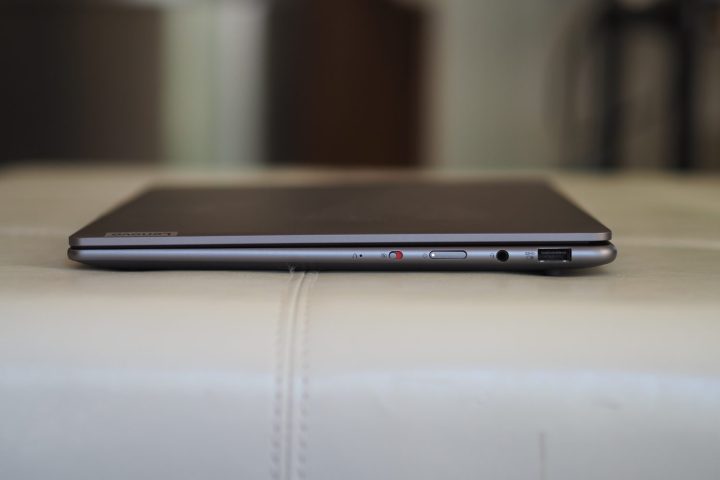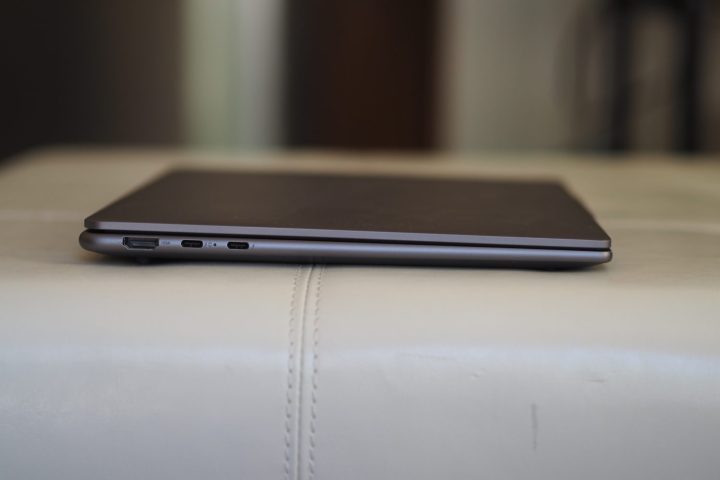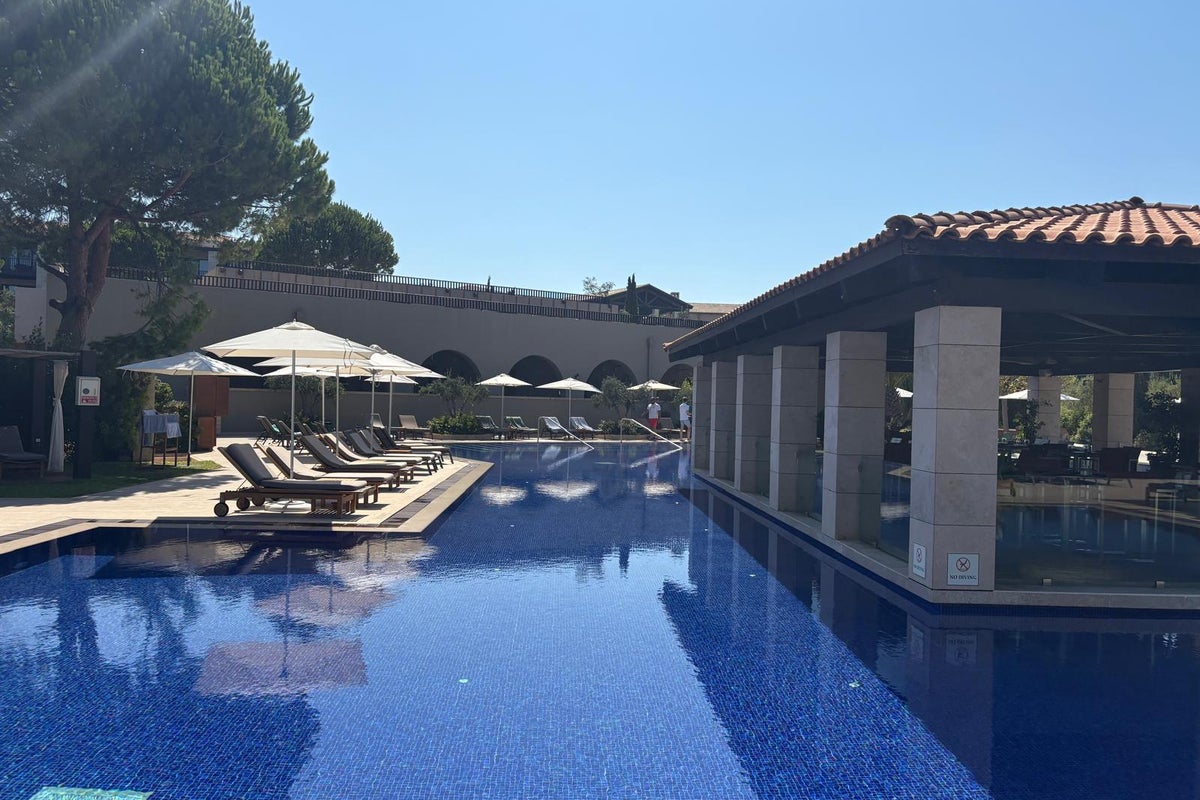This Lenovo model made me a believer in cheaper laptops
The Lenovo Slim 7i Gen 9 is one of a growing number of excellent OLED laptops in the $1,000 price range. It's fast and well-built, but has poor battery life.
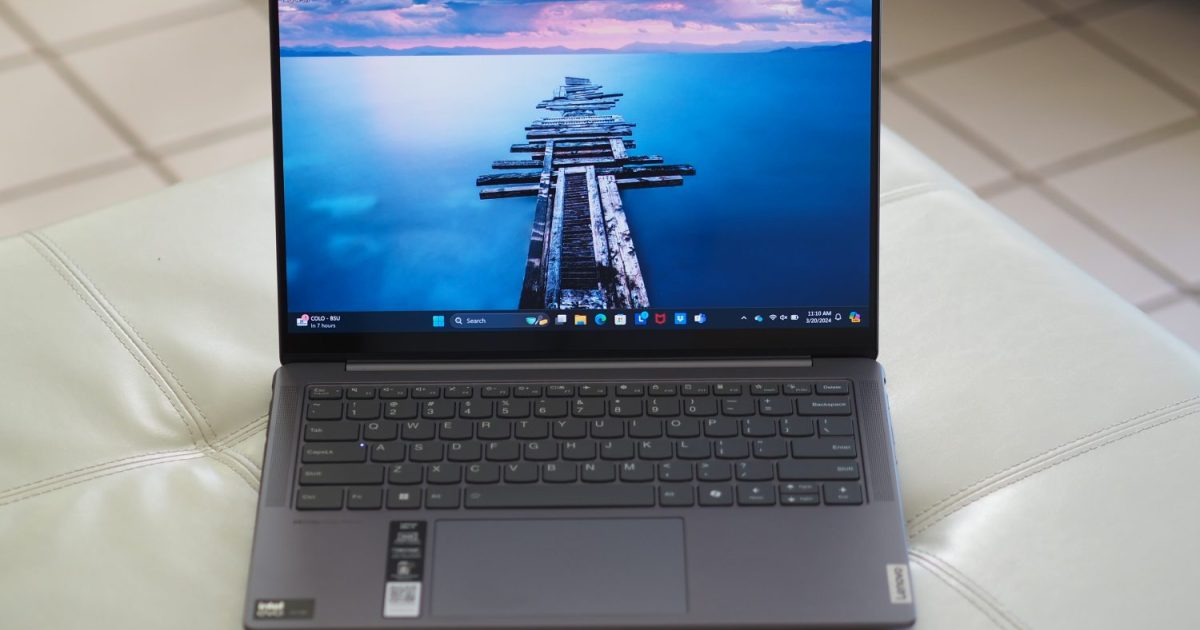
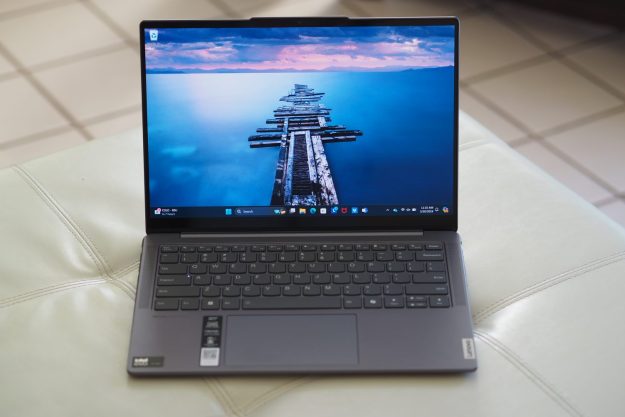
Lenovo Slim 7i Gen 9
MSRP $1,050.00
Pros
Solid build quality Comfortable and attractive aesthetic Excellent productivity performance Very good OLED display Good keyboard and touchpadCons
Display is only FHD+ Battery life is below-averageOne of the most exciting recent laptop trends has been the migration of excellent design and performance into lower-priced laptops. Nowhere has this been truer than with OLED displays, where laptops costing $1,000 and less are available with better displays than the $2,000 laptops of a few years ago. Lenovo’s Slim 7i Gen 9 is one such laptop.
The Slim 7i Gen 9 is a thin-and-light 14-inch laptop with the latest Meteor Lake chipsets. But what makes it special is its $1,000 price. I found it to be as good as laptops costing considerably more, and you can’t go wrong with OLED technology. Disappointing battery life is the only thing holding the Slim 7i Gen 9 from an even higher rating.
Specs and configurations
| Lenovo Slim 7i Gen 9 | |
| Dimensions | 12.3 inches x 8.70 inches x 0.59 inches |
| Weight | 3.06 pounds |
| Processor | Intel Core Ultra 5 125H Intel Core Ultra 7 155H |
| Graphics | Intel Arc graphics |
| RAM | 16GB 32GB |
| Display | 14.0-inch 16:10 FHD+ (1920 x 1200) touch, 60Hz |
| Storage | 1TB SSD |
| Touch | Optional |
| Ports | 2 x USB-C with Thunderbolt 4 1 x USB-A 3.2 Gen 1 1 x HDMI 2.1 1 x 3.5mm audio jack |
| Wireless | Wi-Fi 6E and Bluetooth 5.3 |
| Webcam | 1080p with infrared camera for Windows 11 Hello |
| Operating system | Windows 11 |
| Battery | 65 watt-hours |
| Price |
$1,050+ |
I reviewed the Slim 7i Gen 9 with an Intel Core Ultra 7 155H chipset, 32GB of RAM, a 1TB SSD, and a 14.0-inch Full HD+ (1920 x 1200) OLED display. That configuration will be available at Costco for $1,000 in late March or early April, and it currently costs $1,116 in the Lenovo store. The base configuration costs $900 with a Core Ultra 5 125H and 16GB of RAM.
Lenovo’s configuration options can be confusing and are always subject to change. I suspect the base model will decrease in price, and if Lenovo can push the price down to around $800 with the OLED display, the Slim 7i Gen 9 will be a real bargain. As it is, the Slim 7i Gen 9 faces stiff competition from laptops like the Asus Zenbook 14 Q425, which is priced a little higher at $1,050, although with just 16GB of RAM.
A safe, very comfortable design
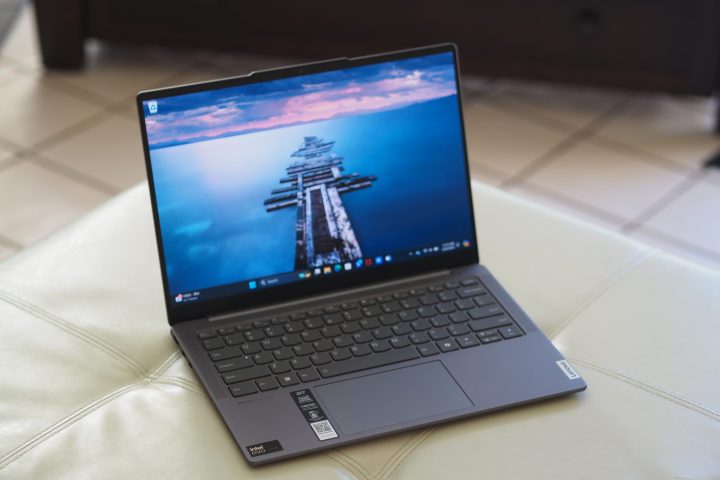 Mark Coppock / Digital Trends
Mark Coppock / Digital TrendsLenovo’s design sensibilities have changed in the last several years, with its iconic ThinkPad black-on-black aesthetic making way for more modern approaches. The company has always offered alternative designs in its mainstream laptops, namely the Yoga and Slim lineups, and now it’s also bringing some continuity.
The Slim 7i Gen 9 offers the newer rounded chassis edges that make the laptop comfortable in hand and give it a bit of elegance. The color scheme and angles are minimalistic, with only a blocky Lenovo logo breaking up the Luna Gray lid and chassis with a lighter gray keyboard. The Slim 7i Gen 9 competes against the excellent Asus Zenbook 14 Q425 and Apple MacBook Air, but it holds its own.
The Slim 7i Gen 9 also has a solid aluminum build, with no bending, flexing, or twisting in the lid, keyboard deck, or chassis bottom. I’ve been impressed at how well laptops in the $700 to $1,000 range are being built today, and the Slim 7i Gen 9 is a welcome addition to that growing club. The Zenbook 14 Q425 and MacBook Air are also well-built laptops, with the latter having a lid that’s just slightly bendable.
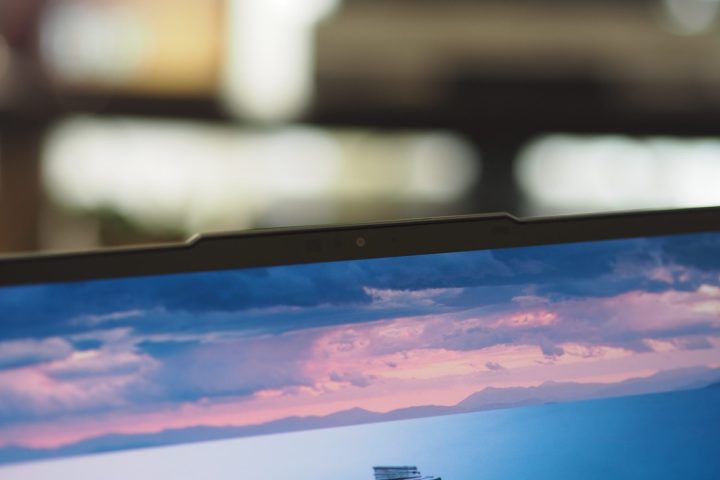 Mark Coppock / Digital Trends
Mark Coppock / Digital TrendsThe Slim 7i Gen 9 has slim display bezels, in part thanks to a reverse notch on the display that’s the opposite of the MacBook Air’s display notch that cuts into the viewable area. The Slim 7i Gen 9 and Zenbook 14 Q425 are almost the same size in width and depth, and each is 0.59 inches thick. The Lenovo is slightly heavier at 3.06 pounds versus 2.82 pounds.
The MacBook Air is thinner and lighter than both, at just 0.44 inches and 2.7 pounds, although it also has a slightly smaller 13.6-inch display.
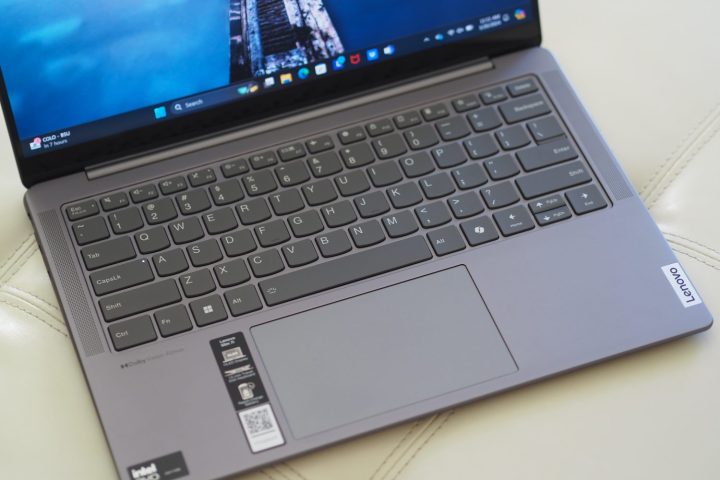 Mark Coppock / Digital Trends
Mark Coppock / Digital TrendsI enjoyed the keyboard quite a bit, thanks to its large sculpted keycaps, ample key spacing, and snappy and precise switches that offer plenty of travel. I’m not sure what Lenovo did to update the keyboard since I reviewed the Slim Pro 9i 14, which had a similar keyboard, but I liked the Slim 7i Gen 9’s feel a bit more.
Apple’s Magic Keyboard remains my favorite, but Lenovo’s latest version is very close in terms of being comfortable over long typing sessions (like writing this review). Unfortunately, Lenovo hasn’t carried over the excellent haptic touchpad from the ThinkPad Z13, but the Slim 7i Gen 9’s mechanical version works well enough.
One interesting element, which we’ll be seeing on more laptops, is the Microsoft Copilot key. Today, it calls up the cloud-based Copilot generative AI, but with the Meteor Lake chipset’s Neural Processing Unit (NPU), that button might one day access on-device AI. Today, such AI functionality is limited to Microsoft Studio Effects, which is accessible via the 1080p webcam housed in the notch. The webcam includes an infrared camera for Windows 11 facial recognition support.
Finally, connectivity meets the 14-inch laptop standard, with a mix of Thunderbolt 4 and legacy ports. I’ve seen quite a few laptops lately that leave out an SD card reader, which is a shame, and the Slim 7i Gen 9 is one of them. Wireless connectivity is the highest that’s widely supported at Wi-Fi 6E, but it’s a step behind the absolute latest standard, Wi-Fi 7. It will be quite some time before Wi-Fi 7 is widely available, so Lenovo made a safe choice.
Great performance, disappointing longevity
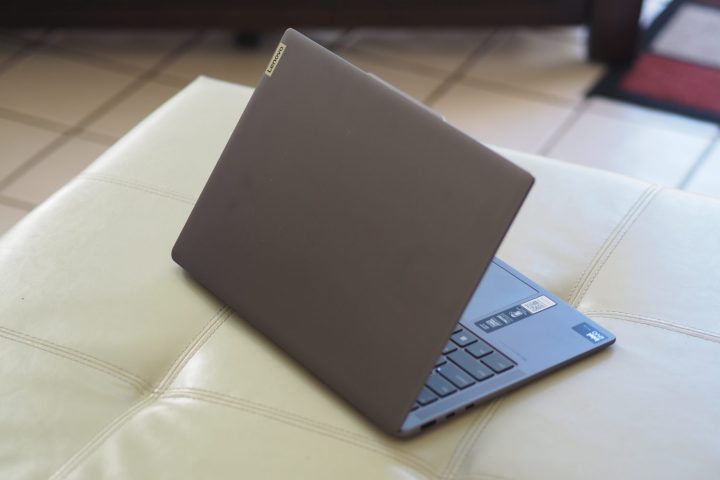 Mark Coppock / Digital Trends
Mark Coppock / Digital TrendsThe Slim 7i Gen 9 is built around the 28-watt Core Ultra 7 155H, the most ubiquitous Meteor Lake chipset to hit laptops in 2024. It’s a 16-core (six Performance, eight Efficient, and two Low Power Efficient), 22-thread chipset running at up to 4.8 GHz. It uses Intel’s latest integrated graphics, Intel Arc, that fall somewhere between the older Intel Iris Xe graphics and entry-level discrete GPUs.
In our suite of benchmarks, the Slim 7i Gen 9 is one of the fastest machines we’ve tested with the Core Ultra 7, at least among similar thin-and-light laptops. It’s significantly faster than the previous-gen 28-watt Intel Core i7-1360P and even the 45-watt Core i7-13700H.
The Slim 7i Gen 9 was particularly impressive in the PCMark 10 Complete benchmark, which runs CPU- and GPU-intensive tests. Its score in the Creation portion of the benchmark that uses the GPU was competitive with laptops running discrete GPUs.
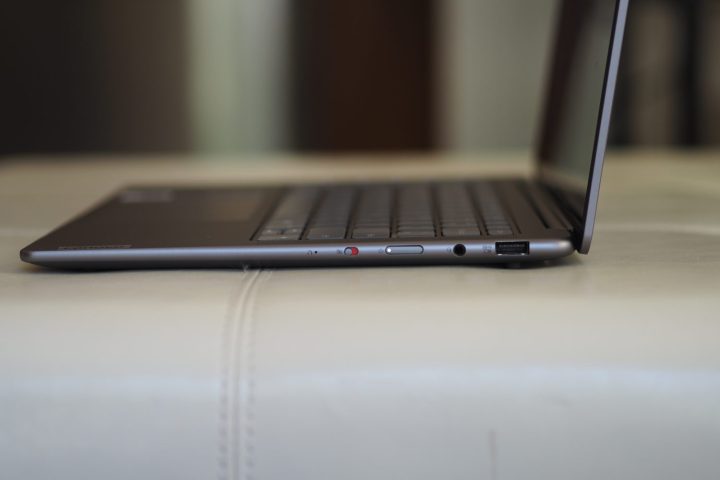 Mark Coppock / Digital Trends
Mark Coppock / Digital TrendsThe Slim 7i Gen 9 did all this while remaining relatively cool and quiet. The fans spun up in performance mode, but were reasonably muted, and the chassis never got more than warm to the touch. It’s a laptop that can tackle demanding productivity tasks without working up a sweat. Its Intel Arc performance might be very good for the class, but it’s still not a gaming laptop or one that’s going to please creators who rely on fast GPUs to get their work done.
| Geekbench 5 (single/multi) |
Handbrake (seconds) |
Cinebench R23 (single/multi) |
PCMark 10 Complete |
|
| Lenovo Slim 7i Gen 9 (Core Ultra 7 155H) |
Bal: 1,739 / 11,870 Perf: 1,721 / 11,818 |
Bal: 111 Perf: 78 |
Bal: 1,764 / 11,517 Perf: 1,808 / 13,647 |
6,658 |
| Lenovo ThinkPad X1 Carbon Gen 12 (Core Ultra 7 155H) |
Bal: 1,658 / 8,569 Perf: 1,698 / 9,726 |
Bal: 159 Perf: 108 |
Bal: 1,570 / 6,867 Perf: 1,625 / 10,365 |
6,082 |
| Asus Zenbook 14 OLED 2024 (Core Ultra 7 155H) |
Bal: 1,696 / 9,502 Perf: 1,703 / 12,246 |
Bal: 145 Perf: 88 |
Bal: 1,653 / 9,156 Perf: 1,635 / 12,130 |
6,316 |
| HP Spectre x360 14 (Core Ultra 7 155H) |
Bal: 1,696 / 9,502 Perf: 1,703 / 12,256 |
Bal: 111 Perf: N/A |
Bal: 1,750 / 9,832 Perf: N/A |
6,316 |
| Lenovo Yoga 9i Gen 8 (Core i7-1360P) | Bal: 1,843 / 8,814 Perf: 1,835 / 10,008 |
Bal: 122 Perf: 101 |
Bal: 1,846 / 8,779 Perf: 1,906 / 9,849 | 6,102 |
| Asus Zenbook 14X OLED (Core i7-13700H) | Bal: 1,848 / 11,157 Perf: 1,852 / 11,160 |
Bal: 84 Perf: 82 |
Bal: 1,819 / 11,066 Perf: 1,826 / 12,795 | 6,020 |
| HP Pavilion Plus 14 2023 (Ryzen 7 7840U) |
Bal: 1,819 / 9,655 Perf: N/A |
Bal: 84 Perf: N/A |
Bal: 1,721 / 12,234 Perf: N/A |
6,804 |
| Apple MacBook Air (M2) |
Bal: 1,925 / 8,973 Perf: N/A |
Bal: 151 Perf: N/A |
Bal: 1,600 / 7,938 Perf: N/A |
N/A |
While the Slim 7i Gen 9 impressed in its performance, it was disappointing in its battery life. OLED displays are generally power-hungry, although Lenovo included a lower-resolution Full HD+ panel that should save somewhat on juice. But the 65 watt-hour battery just wasn’t enough.
In our web-browsing test, the Slim 7i Gen 9 managed just six hours, a disappointing score compared to most modern laptops, which hover around eight hours. The Asus Zenbook 14 Q425 hit 12.5 hours, or twice as long, and the M3 MacBook Air 13 managed a whopping 19.5 hours. The Slim 7i Gen 9 was even more disappointing when looping our test video, hitting just 6.5 hours. That’s about half the average and well behind the Zenbook’s 18 hours.
You’ll be pulling out your charger soon after lunch.
Low-res, but still OLED
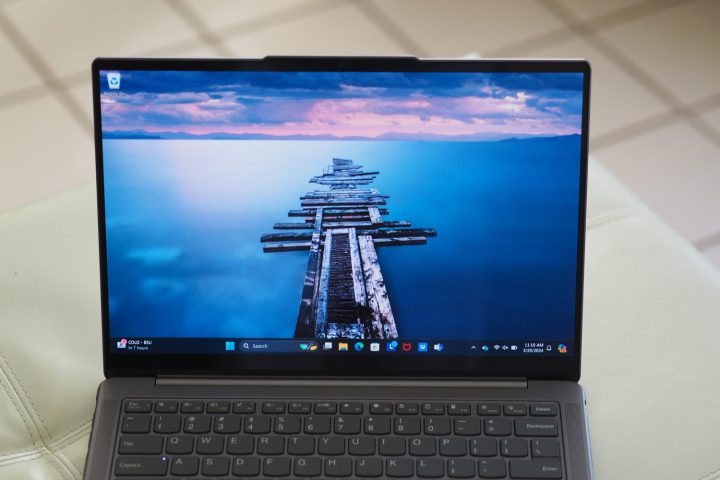 Mark Coppock / Digital Trends
Mark Coppock / Digital TrendsThe Slim 7i Gen 9 is the second 14-inch laptop I’ve reviewed with an FHD+ (1920 x 1200) OLED display. The Zenbook 14 Q425 is the other, and that’s quite a bit lower resolution than most others I’ve reviewed with 2.8K (2880 x 1800) OLED panels. I like sharp text, and so this wasn’t my favorite display, but some people won’t notice the difference. Unfortunately, while the low-res display helped the Zenbook hit excellent battery life, that wasn’t the case here.
Even so, according to my colorimeter, this is a quality display. Brightness was very good at 420 nits, and colors were wide at 100% of sRGB, 95% of AdobeRGB, and 100% of DCI-P3, with excellent accuracy at a DeltaE of 0.9 (less than 1.0 is indistinguishable to the human eye). The contrast was extremely high, as usual for the technology, with inky blacks. The refresh rate was lower at 60Hz — many similar laptop displays are running at 120Hz.
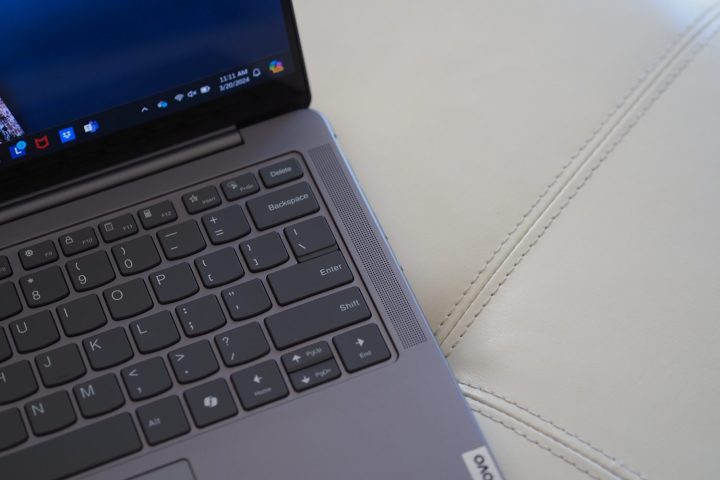 Mark Coppock / Digital Trends
Mark Coppock / Digital TrendsAudio duties are performed by four speakers, two upward-firing and two downward-firing, which I found to be surprisingly quiet at full volume. Mids and highs were fine, and there was even a touch of bass. But the speakers weren’t the best I’ve heard in 14-inch laptops. That distinction likely applies to the MacBook Air.
A strong option in an increasingly larger class of laptops
The Slim 7i Gen 9 would have been a standout laptop a few years ago, offering class-leading performance and an OLED display at midrange and near-budget pricing. Today, it faces a lot more competition, and it’s held back by lesser battery life.
Even so, there’s a lot to like. The keyboard and touchpad are very good, the chassis is solidly built, and it looks good. At its price of $1,050, it offers a great configuration. I can give it a recommendation, and if Lenovo pushes a configuration to around $800, it will rate even higher.

 BigThink
BigThink 